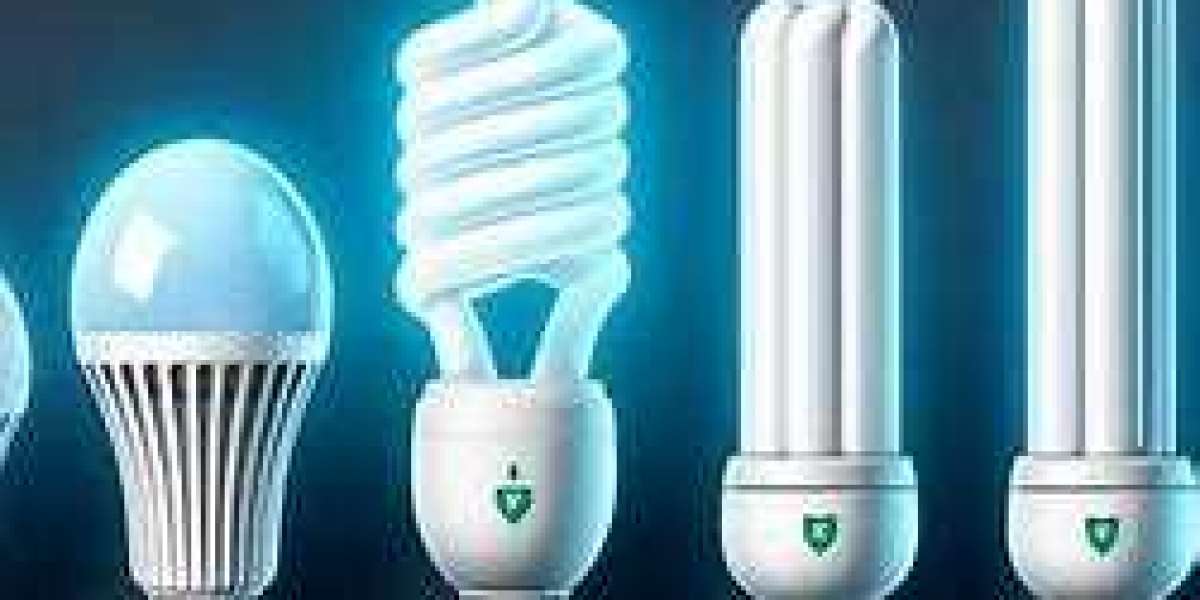In recent years, LED (Light Emitting Diode) lighting has become one of the most significant advancements in the lighting industry, revolutionizing energy efficiency and transforming the way we approach lighting design in both homes and businesses. LEDs offer numerous benefits over traditional incandescent and fluorescent lighting, including energy efficiency, longevity, sustainability, and design flexibility. As the world continues to embrace a more energy-conscious mindset, LED lighting is poised to play a key role in reshaping the future of how we light our spaces.
Understanding LED Technology
LED lighting works by passing an electric current through a semiconductor, which then emits light. Unlike traditional incandescent bulbs that rely on heating a filament to produce light, LEDs produce light more efficiently, generating little heat and consuming much less energy. This makes LEDs vastly superior in terms of energy efficiency, durability, and environmental friendliness.
One of the primary reasons LED lighting is so energy-efficient is that it converts almost all of the energy it uses into light, with very little wasted as heat. This is in stark contrast to incandescent bulbs, which convert only about 10% of energy into light and waste the remaining 90% as heat. LEDs can last up to 25 times longer than traditional bulbs, making them an ideal choice for both residential and commercial applications.
Energy Efficiency and Savings
The global push for sustainability and energy conservation has driven the widespread adoption of LED lighting. LEDs are not only more energy-efficient than traditional lighting options, but they also provide significant cost savings for both homeowners and business owners.
For example, according to the U.S. Department of Energy, widespread use of LED lighting could save the United States up to $30 billion annually in energy costs by 2027. This statistic highlights just how transformative the adoption of LED lighting can be for reducing overall energy consumption. In residential homes, switching from incandescent bulbs to LEDs can reduce energy consumption for lighting by up to 80%, leading to significant savings on electricity bills.
Businesses that switch to LED lighting can also experience substantial cost reductions. For instance, many office buildings, warehouses, and retail stores have seen their energy bills decrease dramatically after installing LED lighting systems. Not only do LEDs use less electricity, but their longer lifespan also reduces maintenance costs and the need for frequent bulb replacements.
Additionally, the energy savings associated with LEDs are not just a one-time benefit. Over the long term, businesses and homeowners can continue to save money on their utility bills, making the initial investment in LED lighting worthwhile. These savings are particularly significant for commercial buildings, where lighting accounts for a significant portion of the overall energy consumption.
Longevity and Durability
One of the most appealing aspects of LED lighting is its remarkable longevity. Traditional incandescent bulbs typically last around 1,000 hours, while compact fluorescent lamps (CFLs) last around 8,000 hours. In contrast, LED bulbs can last anywhere from 25,000 to 50,000 hours, depending on the quality of the bulb and usage conditions. This extended lifespan means that LEDs require far fewer replacements over time, which is not only more convenient but also more cost-effective in the long run.
The durability of LEDs further contributes to their appeal. Unlike incandescent and fluorescent lights, LEDs are solid-state lights, meaning they are made from durable materials that can withstand shock, vibrations, and extreme temperatures. This makes them ideal for a variety of environments, from homes and offices to industrial settings. Their ability to perform reliably in challenging conditions is a key factor in their growing popularity.
Environmental Impact and Sustainability
The environmental benefits of LED lighting cannot be overstated. As the world faces increasingly urgent challenges related to climate change and resource depletion, the importance of adopting energy-efficient technologies has never been more critical. LED lighting is at the forefront of this movement, offering a sustainable alternative to traditional lighting options.
One of the primary advantages of LEDs is that they do not contain harmful substances such as mercury, which is found in compact fluorescent lamps (CFLs). This makes LED lighting safer for the environment and easier to dispose of, as it does not require special handling like CFLs. Additionally, because LEDs use less energy and last longer, they reduce the overall demand for electricity, which in turn helps to reduce carbon emissions from power plants.
By transitioning to LED lighting, both homes and businesses can contribute to a more sustainable future. According to a report by the International Energy Agency (IEA), the widespread adoption of LED lighting could cut global electricity demand for lighting by 50% by 2030, resulting in substantial reductions in greenhouse gas emissions.
Design Flexibility and Aesthetic Appeal
Beyond energy efficiency and environmental impact, LED lighting has revolutionized the world of interior design. With their small size, versatility, and ability to produce different colors and effects, LEDs have opened up new possibilities for creative lighting designs in both residential and commercial spaces.
In homes, LED lighting allows for a high degree of customization, from accent lighting to task lighting and everything in between. LEDs can be used to create dramatic lighting effects, highlight architectural features, or provide subtle ambiance. Thanks to their ability to change color temperatures and colors, homeowners can now easily adjust the mood of a room with the touch of a button, creating spaces that are both functional and visually striking.
In businesses, LED lighting has also become a key tool in design. Retail stores, restaurants, and hotels are using LED lighting to create unique atmospheres that enhance the customer experience. The ability to control the intensity and color of the light allows businesses to tailor their lighting to match their brand identity, making it an essential element in modern design. Additionally, with the advent of smart lighting systems, businesses can further optimize their lighting setups to improve energy efficiency while maintaining an aesthetically pleasing environment.
Health and Well-Being Benefits
While LEDs are widely recognized for their energy efficiency and design flexibility, they also offer numerous benefits for human health and well-being. One of the primary advantages of LED lighting is the ability to control color temperature, which can have a direct impact on our circadian rhythms and overall mood.
For example, cool white LEDs, which emit a blue-toned light, are ideal for task-oriented spaces such as kitchens and offices, where bright, focused light is needed. On the other hand, warm white LEDs, which emit a yellow-toned light, are perfect for creating a relaxing and cozy atmosphere in living rooms and bedrooms. Studies have shown that exposure to the right type of light at the right time of day can improve sleep quality, boost productivity, and even enhance cognitive function.
Smart LED lighting systems, which can be programmed to adjust automatically throughout the day, further enhance these health benefits by providing lighting that mimics natural daylight patterns. This is especially beneficial for people who work long hours in artificial lighting or for those living in areas with limited access to natural light during the winter months.
The Future of LED Lighting
As LED technology continues to advance, it is likely that we will see even more improvements in energy efficiency, design capabilities, and functionality. The ongoing development of smart lighting systems, which can be controlled remotely through mobile apps or integrated with home automation systems, is already transforming how we interact with light. These systems allow users to adjust the brightness, color, and timing of their lights with ease, offering a level of convenience and control that was previously unimaginable.
In addition, the ongoing research and development of OLED (Organic Light Emitting Diodes) technology is expected to further expand the possibilities of LED lighting. OLEDs are thinner, more flexible, and more energy-efficient than traditional LEDs, and they have the potential to revolutionize the lighting industry even further by enabling new applications, such as flexible, transparent, or even printable lighting panels.
Conclusion
LED lighting is undeniably revolutionizing the way we think about energy efficiency, design, and sustainability. With its remarkable energy savings, long lifespan, environmental benefits, and design versatility, LED lighting is transforming both residential and commercial spaces. From saving money on electricity bills to creating beautiful and dynamic lighting environments, the benefits of LED lighting are clear. As the technology continues to evolve, it is exciting to imagine the new ways in which LED lighting will shape the future of our homes, businesses, and cities.
For more information on how LED lighting is changing the world, visit the U.S. Department of Energy’s official page on LED Lighting and learn more about the environmental impact of LEDs at IEA.
This article explored how LED lighting is revolutionizing energy efficiency and design in homes and businesses, incorporating two stats and helpful links to further expand your understanding of this transformative technology.








